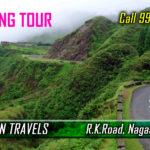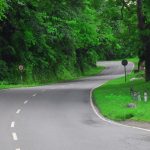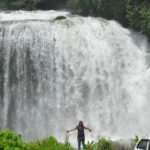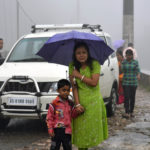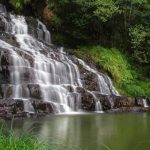High above misty valleys and foaming rivers, ensconced in swirling clouds and perched on an escarpment, lies Cherrapunji (4,500 feet). This is a stunning location and the year-round rain earned Cherrapunji coveted entry long ago into the Guinness Book of World Records as the wettest place on earth, the place where the rainfall can be recorded in feet rather than in millimeters.
Today, climatic changes have edged Cherrapunji out of the topmost ‘wet’ slot, but it still retains its pristine beauty, its unusual facets, the perpetual clouds, and the perpetual mists…. Appropriately, Cherrapunji lies in the heart of the State of Meghalaya-the abode of clouds.
The locals traditionally call it Sohra, however, the world knows it by the more popular name of “Cherrapunjee” or “Cherrapunji”. Once the wettest place on earth, Cherrapunjee today is the second rainiest place on earth after Mawsynram. Cherrapunjee receives close to a whopping 12 m of rain every year.
Though the status of the most rainiest place on earth has changed from Cherrapunji to Mawsynram (about 16km from Cherrapunji), Cherrapunjee still reigns supreme in terms of tourist attraction and infrastructure compared to Mawsynram.
Cherrapunji attracts lot of tourists because of its abundant natural beauty, package of valleys and waterfalls, caves and canyons, evergreen misty landscapes and heavy rains.
Living Bridges of Cherrapunji – the double decker root bridge and single root bridges are unique in the world and are a sight to behold. The bridges are tangles of massive thick roots, which have been intermingled to form a bridge that can hold several people at a time. Khasi people have been trained to grow these bridges across the raised banks of streams to form a solid bridge, made from roots. The living bridges are made from the roots of the Ficus elastica tree, which produces a series of secondary roots that are perched atop huge boulders along the streams or the riverbanks to form bridges.
The root bridges, some of which are over a hundred feet long, take ten to fifteen years to become fully functional, but they’re extraordinarily strong – strong enough that some of them can support the weight of fifty or more people at a time. The bridges are alive and still growing and gain strength over time.
Places to Visit in Cherrapunjee
Double Decker Living Root Bridge, Nohkalikai Falls, Mawsmai Cave, Dain-Thlen Falls, Sa-I-Mika Park, Kynrem Falls, Mawkdok Dympep Valley, Khoh Ramhah, Nohsngithiang Falls, Noh-Sngithiang Falls, Thangkharang Park, Khasi monoliths, Mawmluh Cave, Eco Park, Arwah Cave




